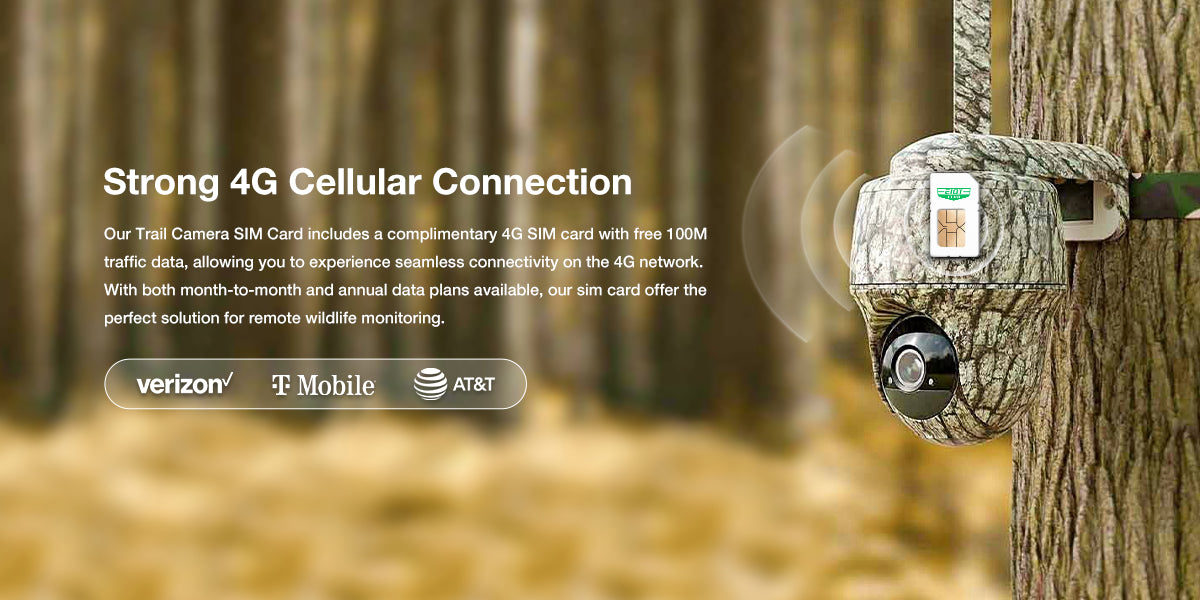Trail cameras have revolutionized the way we capture wildlife and monitor our surroundings. These cameras are equipped with advanced features that allow us to capture high-quality images and videos in remote locations. One of the key components that enhance the functionality of trail cameras is the SIM card. In this article, we will explore the pros and cons of using a SIM card with your trail camera.

Enhanced Connectivity
One of the major advantages of using a SIM card with your trail camera is the enhanced connectivity it provides. By inserting a SIM card into your camera, you can instantly transmit images and videos to your mobile device or computer. This allows you to monitor the camera remotely and receive real-time updates on wildlife activity. Whether you are a wildlife enthusiast or a researcher, this feature can greatly enhance your ability to gather data and make informed decisions.
For example, imagine you have set up your trail camera in a remote area to monitor a rare species of bird. With a SIM card, you can receive notifications whenever the camera detects movement and instantly view the images or videos captured. This real-time connectivity can be invaluable in capturing rare moments and studying the behavior of wildlife.
Convenience and Time-Saving
Using a SIM card with your trail camera also offers convenience and saves time. Without a SIM card, you would need to physically retrieve the camera's memory card to access the images and videos. This can be time-consuming, especially if the camera is placed in a hard-to-reach location. With a SIM card, you can simply access the media files remotely, eliminating the need for frequent visits to the camera site.
Furthermore, the convenience of remote access allows you to quickly identify any issues with the camera, such as battery drainage or technical malfunctions. This enables you to troubleshoot problems promptly and ensure that your camera is always functioning optimally.
Cost Considerations
While the benefits of using a SIM card with your trail camera are undeniable, it is important to consider the associated costs. Depending on your location and the data plan you choose, using a SIM card for remote connectivity can incur additional expenses. Monthly data charges and network coverage limitations should be taken into account when deciding whether to use a SIM card with your trail camera.
However, it is worth noting that some trail camera manufacturers offer bundled data plans or affordable options for SIM card usage. Researching different providers and comparing their offerings can help you find a cost-effective solution that suits your needs.
Privacy and Security Concerns
Another aspect to consider when using a SIM card with your trail camera is privacy and security. Transmitting images and videos over a cellular network means that they are vulnerable to interception or unauthorized access. While trail camera manufacturers take measures to ensure data security, it is important to be aware of the potential risks.
To mitigate these concerns, it is advisable to use secure networks and enable encryption features provided by the camera manufacturer. Additionally, regularly updating the camera's firmware and using strong passwords can further enhance the security of your data.
In conclusion, using a SIM card with your trail camera offers enhanced connectivity, convenience, and time-saving benefits. It allows you to remotely monitor your camera, receive real-time updates, and access media files without physically retrieving the camera's memory card. However, it is important to consider the associated costs and privacy concerns before opting for this feature. By weighing the pros and cons, you can make an informed decision that aligns with your specific needs and preferences.







